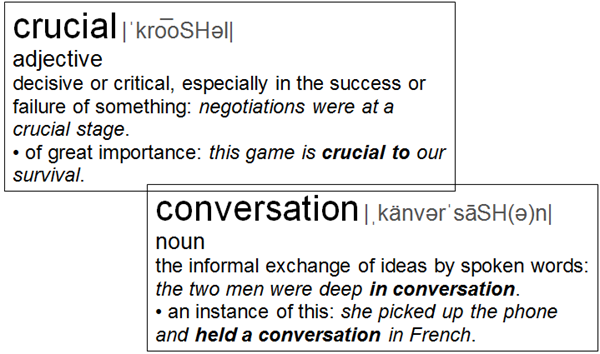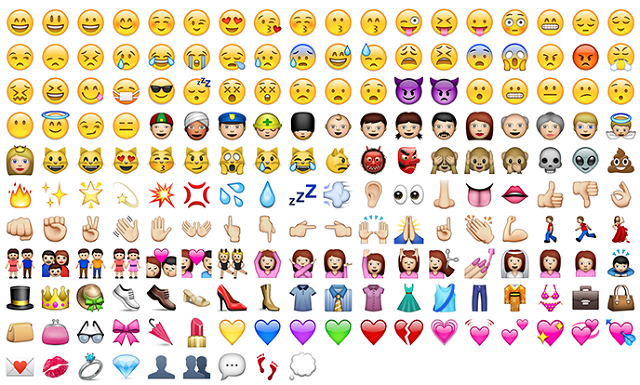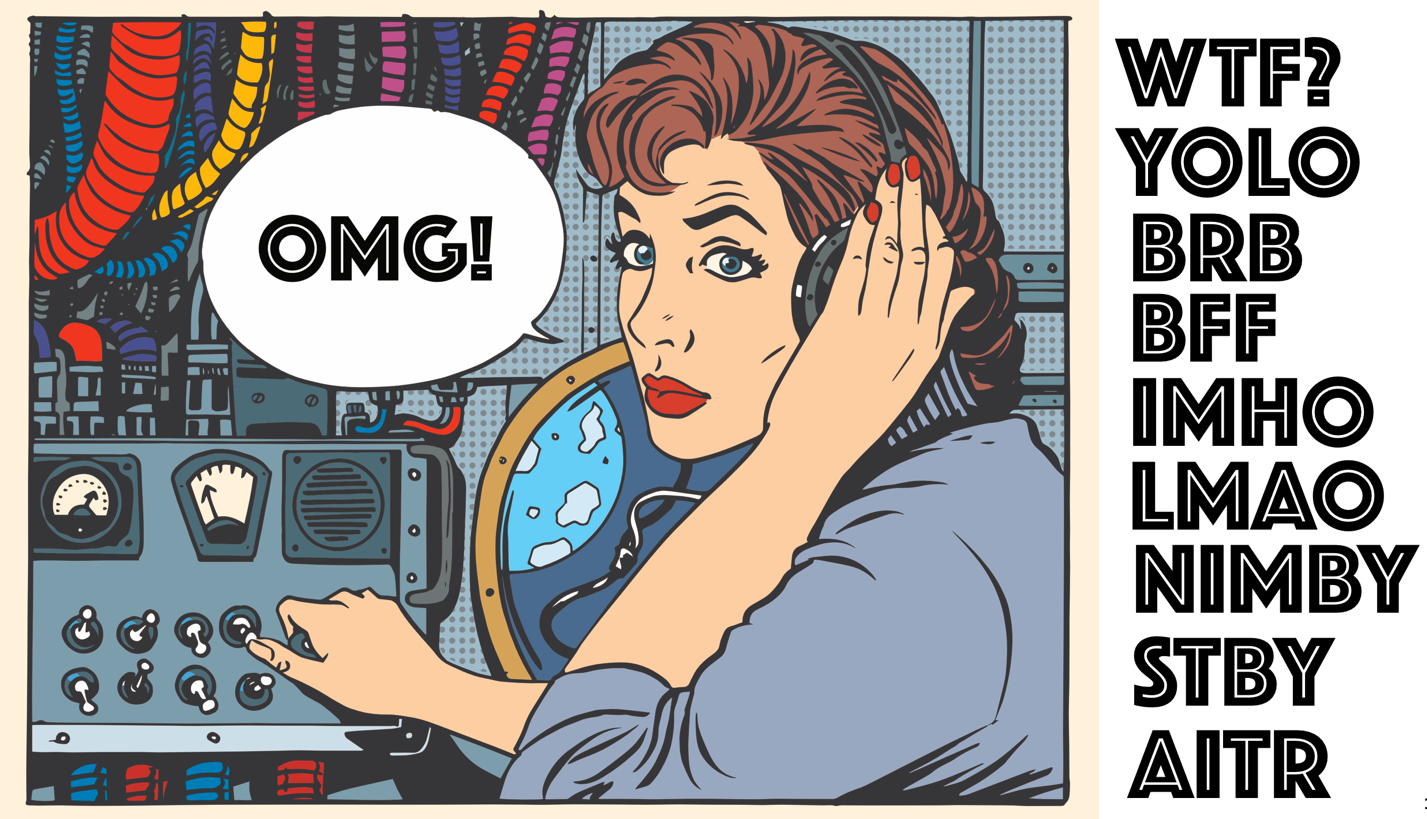Crucial Conversations: How to Effectively Discuss What Matters Most
“How would you feel if a house fell on your sister?”
Elphaba (WWOTW)
Let’s face it, there are just some conversations that you don’t want to have. There are some people you simply don’t want to talk to, but what happens when we don’t have these conversations? Everyone loses! It is perfectly natural for us to avoid difficult conversations. We fear rejection, retaliation, emotional outbreaks, the dismissal of our ideas, and of course those incredibly awkward moments where everyone around you stares at their feet thinking “God I am glad that’s not me.” However, these conversations need to be had and the Badass Business Analyst will have them. If we want healthy, productive teams and projects, crucial conversations must be had frequently. You can’t just keep ranting, raving, complaining and avoiding, you need to start having meaningful, persuasive conversations that make an impact. You need your ideas to be heard, and more importantly you need behaviors to change. Don’t you think its time you and I have a crucial conversation? Suddenly I feel like I have turned into my father. Sigh. For the record, all of his crucial conversations were always too late, which is maybe why I am so passionate about this particular chapter in my book (the longest chapter by far – okay, moving away from from therapy now).
At the time I am writing this book and this particular chapter, it is March of 2016 and we are embroiled in one of the ugliest Presidential campaigns I have ever seen. It is like the start of a joke that goes “A Democrat, a Socialist, and three Republicans walk into a bar…” I cannot think of five, more deserving individuals that need a crucial conversation, a spanking, and a very long time out in the corner. A massive amount of research has been done over the last 25 years on over 100,000 people and the results show that the most effective leaders are the ones that can skillfully address risky political and emotional issues. These are the people that know how to have crucial conversations with positive outcomes. However, true to form, these folks are operating off of the oldest approach to politics – the FUD principle; fear, uncertainty, and doubt. Fortunately, I know that the amazingly smart and talented readers of this book won’t cave in to FUD and are smart enough to know that they will learn how to have crucial conversations.
Defining Crucial Conversations
Let’s start with defining what a crucial conversation is. The dictionary says:

There is of course the definition from the fantastic book “Crucial Conversations” that states:

However, my take on it is a little different. Years of both failed and successful crucial conversations have led me to the following definition:

At the end of the day, the point of having the conversation is to influence to a different result or a needed behavioral change and to do so means you must be strategic in your approach. It seems to me that the stakes are always high given our do-more-with-less culture, and when stress is high the opinions and emotions will always do what they do based on survival instinct. You need a strategy to deal with that.
Examples of Everyday Crucial Conversations
There are a lot of what I would call “obvious” crucial conversations that need to be had. Here a few:
| AT HOME | AT WORK |
| Time to lose a roommate! | The person who has bad hygiene |
| Recoup that “loan” that never gets repaid | The person whose index finger has a home address of 1 North Nose Lane |
| Um… you cheated (at everything?) | Telling the boss they are basically not a good boss |
| Your child who doesn’t get it and refuses to communicate with you | Critiquing a colleague’s work – evaluating their requirements |
| Those “holidays” – because we have all had them | The team member who does not follow through |
| The in-laws – because we all have them! | The person that finds creative ways to demean you |
| Financial needs/burdens | The coworker who crosses the line (and crosses it, and crosses it) |
| The chores conversation – when is that trash going to get taken out? | The giving or receiving of the not so favorable performance review |
| The “time to grow up” talks: sex, college, career, marriage, death | Coworkers having/doing sex, drugs, alcohol, porn in the workplace |
Most people who see the issues happening do not effectively confront and resolve them, mostly for two reasons:
- If they avoid it, it will go away.
- They don’t know how.
I have been fortunate or unfortunate as the case may be, to have experienced all of the scenarios above either on the receiving or giving side. Don’t let your imagination run away with you, I was not the “one” doing some of those scarier ones. For those of you who know me you will quickly point out that I do not have kids. I do. A “child” for me happens to mean two, beautiful four-legged Shih-Tzu’s named Lady and Maggie. Remember my father’s conversations being too late? Yup – sex, college, career, marriage, death, all too late and mostly because he was hoping they would go away. Good thing I was an accelerated reader and watcher of my siblings making mistakes that I avoided duplicating!
The problem with communication is that you don’t know when people are going to break down or do something unexpected. Some of the scenarios above may never happen at all or several can happen all at once. What is inevitable though is that some of them will happen in a business scenario at some point and you need to be prepared for them. That means we have to be able to communicate effectively and well, we will chat more about that in due course.
Types of Crucial Conversations
There There are three types of crucial conversations that you need to consider:
| CONTENT | PATTERN | RELATIONSHIP |
| A 1-time incident. It happened and was done. | A repeated incident. You start to see patterns of emerging behavior. | The patterns of behavior have become consistent and you start to question the intent of the actions. |
These types of crucial conversations are the signs that something is not quite right. They are objective evidence that something is happening. So what is the real problem then? Is it that they do something we don’t like? No, the problem is that we don’t address the issues and we let bad behavior rule us. So we are the problem. Remember, not everyone is aware that they are displaying bad behavior. Keep in mind that crucial conversations will not solve all the worlds problems, nor will they reach everyone. Some conversations will simply never be had because people are not open to them or they don’t care.
Additionally, crucial conversations are NOT therapy. Sometimes through the process of trying to have a crucial conversation people will seek out that additional guidance they feel they need in life. However, if you go down the therapy route you will distort the purpose of the conversation and you will become the go to person for every crisis that will arise in the other person’s life. Are you ready for that kind of investment in the relationship?
Types of Crucial Conversation People
People often end up in three categories: Resistors, Neutrals and Engagers.
| RESISTORS | NEUTRALS | ENGAGERS |
| I don’t agree with you | Let’s see what happens | Yes! |
| What’s in it for me? Nothing |
Just do the minimum | What’s in it for me? Probably a lot |
| Sounds bad to me | I won’t take sides | Let’s do this |
| Well that is stupid | Maybe? | I’m good going on great |
| Why? | Outwit, outlast, outplay | I can learn from this |
You need to recognize the type of person you are dealing with to help devise your strategy for having the conversation. Take the type of person, the type of conversation, and the scenario you are in and you have some really good information that you can start developing a strategy for the conversation you want to have.
5 Critical Concepts for Your Crucial Conversations
1. Remove Your Roadblocks
There are the ‘obvious’ crucial conversations that people should have and the not-so-obvious ones. It is the latter that, if not identified will have long-term damaging effects on your work, your relationships and the work culture you live in. These are your roadblocks. Have you ever thought about the idea that these roadblocks – the very things that get in your way of getting the results you need; are actually the crucial conversations you need to have? Additionally, think about your stress levels. How much stress do you have in your life? Imagine a small, pink, super bouncy rubber ball is an example of what you typically expect for a manageable level of stress. Now let’s move up to a large, lime-green Pomelo (grapefruit), which represents a level of stress that you often feel might be too much but you find a way to survive it. Finally let’s imagine a large, ready-to-burst balloon, representing a tremendous amount of stress that could POP at any time. The more stress in your life means the more crucial conversations you need to have to reduce that stress. The balloon is the warning system of much needed crucial conversations. A Badass Business Analyst is keenly aware that when they are unable to move forward they need to have crucial conversation to remove roadblocks. Someone, somewhere does not understand the goals, objectives or vision of a product or project and nothing is moving forward. Stress levels are going up!
Have you ever tried to have a crucial conversation with your parents when you were young? How did it go? Probably about as well as mine did, which was not very well at all. Today perhaps, I am more keenly aware of roadblocks and stress levels because of my upbringing. When you grow up poor you feel like everything is a road block, that everything and everyone is against you. I remember several crucial conversations with my parents as a child. A strong desire to convey changes in their behavior (not mine) so that I could get what I wanted. Naturally, I was asking for things that they could not give. One will not bet getting a Stretch Armstrong for Christmas when the family needs to eat and pay the mortgage! Still, I really felt I was making a compelling case; the other kids had one, I was the social outcast just like Rudolph or Hermey (please tell me I do not have to explain that reference) and therefore, I needed a Stretch Armstrong to fit in. What I lacked was an understanding of what was really a roadblock in my life, what battles to pick and who I needed to talk to. I had not yet mastered the art of going to Mom instead of Dad or blaming the dog for eating my homework. What I needed was a fundamental understanding of influencing, negotiation, and critical thinking skills. So how did the crucial conversation with my mother go? Well, she turned the tables and had the crucial conversation with me about money and the importance of savings. After one crucial conversation at age 10, I became a janitor for the company where my mother was employed. Let the savings, learning of new skills, and work ethic lessons begin! Nothing like cleaning toilets and ashtrays at age 10 to build some strong work ethics. By the time I had enough money to buy Stretch Armstrong, I had completely forgotten about him.
Want to figure out what roadblocks are really in your way? Start by work backwards. Look at the results that you are not getting. As you trace the results backwards you will pinpoint missed opportunities for crucial conversations. Do a root cause analysis to help you learn how to read the signs that you did not see at the time. Still not seeing the roadblocks? Analyze what really causes you stress in your life. The results might be surprising indeed.
2. Conviction
Having the courage of conviction is not always an easy thing to embrace. You will have to find conviction if you are going to see a crucial conversation happen. Most people avoid crucial conversations. Can you blame them? People are very complicated, difficult, different, unpredictable, and scary. If we avoid them, everything will simply work out in the end, right? It is up to you to address it – no one else is likely to do so and everyone loses if you do not. Remember this is not a conversation to lay blame or say that everything is wrong. It is about something not working as needed. Notice I said “needed” and not expected?
Expected puts it in the blame category. “Needed” puts us in the category of “we are in this together and let’s work collaboratively to determine how we can all win”.
Before you lose sight of your end goals, remember that you need to ensure you focus on what is really needed; for you, for others, and for the relationship. Now that you are moving forward with the courage of your conviction, make sure you stay away from thought processes that offer conditions are your actions.
This is where you have a positive but only if it is attached to a negative. For example:
| I WILL | I WON’T |
| Yes | But… |
| I will do “X” | Now I don’t have to do “Y” |
| We will achieve “AA” | Therefore we can avoid “BB” |
| Because | I should not have to |
These types of scenarios just introduce new roadblocks and will take you two steps backward. You need to be in the I WILL column without any additional conditions.
Also be aware that too much conviction can lead you to situational blindness. Situational blindness is where you get so fixated or assured of the situation you become unaware of changes in the situation. Ever play blind man’s bluff? I did as a child and I went for it with gusto. I also ran into a bike with that blindfold on and chipped a tooth in half. OUCH! Still hurts to this day. It is a great reminder for me to be strategic and balance my conviction with overzealous behavior. At the same time, I will follow my heart and intuition.
“Your time is limited, so don’t waste it living someone else’s life. Don’t be trapped by dogma – which is living with the results of other people’s thinking. Don’t let the noise of others’ opinions drown out your own inner voice. And most important, have the courage to follow your heart and intuition.”
Steve Jobs
3. Look Both Ways
You know how you were taught to look both ways before you crossed the street? Admittedly, looking both ways was not my strong suit as a child. When I was 6-years old I got my first bicycle. A brick-red, German-made contraption whose pedals would stick and required a tremendous amount of momentum to keep it going. Pretty sure the bike had been in an accident and my father got it for free. As luck would have it one day, I was riding my bike home and I needed to cross the street. I looked both ways – nothing in sight. I start across the road. My pedals immediately stick and I am now moving at the speed of a tar pit. Next thing I know, I was hit by a motorcycle, flew over 30 feet in the air from one corner of the block to the other, landed on my head, while the entire neighborhood watched including my parents. Not a good day. Now why a motorcycle is doing 60 MPH on a small neighborhood road in a tiny town and can’t see a fat child on a bright red bike I will never know. I was paralyzed for 30 hours without any certainty of a positive outcome but somehow I woke up, and walked out of the hospital the next day with a bad concussion. If both the motorcyclist and I had been better at looking both ways we would have saved everyone a tremendous amount of stress, headache, and memories. Yes, memories. This accident wiped out almost every memory I had prior to age seven so looking both ways really is a good lesson to embrace from this story! That and it explains so much about me, right?
There are two things you need to look for:
- Learn to look for the signs of when a conversation is about to turn crucial (think nuclear).
- Look for signs for when a conversation should not be pursued at that time.
Looking for signs a conversation is needed include: silence, avoiding of issues, withdrawing from the conversation, lack of participation, attacking behavior, control issues, physical distractions, and emotional outbursts. Of course there are many other signs but you need to pay attention to determine if, and when you will need to have a crucial conversation. These are all “triggers” for people that something is not right. You will want to head them off if you can.
You also need to look for signs that the crucial conversation should be delayed. Timing is everything. Not everyone is ready or going to agree to having a conversation right away. They include: hesitancy, depression, they say no, they say they are not ready, nervousness, jumpy, they are prone to violence, and emotional outbursts. Some of these things you can find out by asking them gently. Some of them will require you to do some sleuthing out through other channels (friends, colleagues etc.). What happens if you ignore these signs and you do pursue a crucial conversation?
Disaster!
Are all people comfortable with having a crucial conversation? Of course not. However, just because you think you are ready to pursue it does not mean the other person is ready to receive it. When there are signs that a crucial conversation is not welcome, or simply people do not feel safe to do so, all productivity crashes, engagement stops, and people shut down. People need to feel safe and unthreatened before a conversation like this can take place. They also need to be able to tell their side of the story without too much emotion. The worst thing you can do is push for your point of view or personal need when they are not ready. If you hear yourself saying “I need to know now” ask yourself “why?” because the pursuit of your happiness at their expense will likely damage the relationship to the point of no return. If you felt a tremor in the force of a roadblock before, you now have a roadblock the size of the Death Star!
Make sure you stay away from any words and phrases that start with “I”. About the only one that might be okay is “I’m sorry” and even then there are likely better ways of saying you are sorry. Find a mutual purpose and approach for the conversation. “We, we can, we are” are all good starts to better communication. You have to probe to see if people are ready for the conversation. Think of the following before you pursue the conversation:
4. Get Your Stories Straight (Use Your Words Bob)
There are signs it is not working. People start with “Its not my fault” and “There is nothing I can do”. Somewhere along the way, something has been lost in translation. Did you lose your story? Did the facts get bloated? In order for a crucial conversation to work, your “story” has to be coherent with a beginning, middle and an end that is based in fact using solid communication skills. Lose the storyline and you lose the crucial conversation’s desired results. It also does not matter how good the story is if you cannot communicate it effectively. Try the following:
- Understand what your role is in the story – are you a part of the problem? Offer up ways to help.
- Stick to the facts. Understand what people see, hear, feel.
- Tell the story in a way that keeps you from being emotional. Keep yourself grounded.
- Ask for their viewpoint of the story. You have to get both sides.
- Ask yourself what would a reasonable person do in the situation?
- Don’t let either side play the victim card. Woe is me!
- Don’t let either side play the villain card. You are the problem!
Using our words and stories is about how we communicate. It seems with increasing regularity that people cannot communicate at all. Do you ever wonder why we can’t communicate? Here are two examples (of which there are many to consider) why communication is complicated:


Emojis and texting acronyms. Communication was hard enough to do before these little wonders came about. Why did we feel that going back to hieroglyphs was a good method of communicating? Yes, I get it, unicorns, rainbows, smiley faces and poo with eyes are cute but I just about lose it trying to decipher a string of emojis.
There is a reason I now own a texting dictionary of acronyms. I remember the first time I encountered YOLO. For some reason I could not decipher it so I looked it up in Urban Dictionary. Imagine my shock and surprise when I read the definition of “you obviously lack originality”. Whhaaaaaaa? My blood was BOILING! How dare they! I am a creative type through and through, the insult, the injury, the… oh get your head out Bob and look again. Of course as I kept reading, the next definition made total sense. “You only live once.” Which is why I say “use your words Bob”.
Who needs words right? Everyone will know exactly what I am saying if you read: “BOCTAAE, and many people DRCOWOTO, but I say GYHOOYA and GOTDPWYD. That is a CC that everyone should have. I mean, RUMCYMHMD. Not smart bruh. Seriously though, PNATTMBTC, he just wants you to TCOY. And next time PDS during your CC and remember, IYCSSNASDSAAA. Okay, well it was GSYJDWURMNKH.
TTYL
Communication is difficult enough indeed without the added complication of translating emojis or acronyms. There are however, all sorts of good communication techniques that you will need to employ to have crucial conversations. Here are a few that you will need to use regularly:
| TECHNIQUE | DESCRIPTION |
| Priming | Probably the most important is priming. It is about educating them, prepping them, getting them ready. If you do not give them context for what is about to happen it will fail. The number one reason for all project and communication failure is lack of context. This can be done over time or all at once. It depends on your strategy for holding the conversation. |
| Asking | Its just like interviewing. Don’t ask inflammatory questions. Ask for facts. Be respectful. |
| Paraphrasing | Make sure they know you are listening. Paraphrase what they said in different words and if they agree you are good to move forward. |
| Mirroring | Mirroring 3 ways – like paraphrasing, we often use mirroring to let people know we are listening and we understand. Mirroring is a retelling of exactly what they said back to them. However, we can also mirror body language and emotions. It puts people at ease and shows you are relatable. Also, I use mirroring as a delay tactic. Example: They say “slip slime shore snarg sluff store shelf”. What was that? What do I do now? I don’t want the conversation to come to a halt so I mirror what they said as a delay tactic to allow me time to think of what to ask them. “So what you are saying is slip slime shore snarg sluff store shelf?” |
| Listening | Listening at all cost – like you have never listened before. The slightest little detail missed can lead to conflict or lack of understanding. |
| Silence | The power of silence – yes, just shut up. Let it sink in. Whether it is their point or yours sometimes silence really is golden. |
| Empathy | You have to care. If you don’t, what is the point? |
| Speaking Equally | No one is better than the other. This is difficult to do if the crucial conversation is about demeaning or condescending behavior. Keep going. You will model the behavior you want them to emulate. Remember, you have to make it a safe environment and speaking equally will help do that. |
5. Actions and Accountability
Crucial conversations will mean absolutely nothing and have all been for naught without a call to action and accepting accountability. Who does what, when, and how it will happen, followed by a checkup on how this process is working are key to the success of the crucial conversation. Here are some tips to ensure that action is taken and accountability happens:
- Understand the flow of accountability – who has to do what?
- What is your call to action? There needs to be a call to action. Just do it! Buy now! What action do you want them to take? It really does have to be spelled out and not inferred.
- You have to have a goal going into this – what are your goals and objectives? Do you know what success looks like and how it will be accomplished?
- Who can help them be accountable? Check with colleagues, mentors and peers to determine who they listen and respond to when it comes to accountability.
- Don’t assume they WILL follow through but assume they HAVE good intent – lots of things get in our way, stuff comes up, life happens. Assume that they will have good intent about following through but check up on them. If they do not, then they move into the “pattern” type of crucial conversation.
- If it goes wrong think about what you did not do – it may indeed be something you did not do and not them. Walk through it and relive it to see what you can see.
- Practice… Practice… Practice… – this is not someone you get good at overnight. It takes time to learn how to control our emotions, how to say non-inflammatory things, how to avoid blame-storming, stopping the blame-shaming and sticking to a fact-based approach.
One Last Thing
Remember that translation of texting acronyms? I wonder how many of you looked it up online first? Did you really think I would leave you hanging and promote bad communication?
It translates to: “But of course there are always exceptions, and many people don’t really care one way or the other, but I say get your head out of your ass and get off the damn phone while you’re driving. That is a crucial conversation that everyone should have. I mean, are you on medication ‘cause you must have missed a dose. Not smart brother. Seriously though, pay no attention to the man behind the curtain, he just wants you to take care of yourself. And next time please don’t shout during your crucial conversation and remember, if you can’t say something nice about somebody don’t say anything at all! Okay, well it was good seeing you just don’t wear your monkey hat next time! Talk to you later.
So at the end of the day, the Badass Business Analyst knows that there is always room to be a better person. Try having a crucial conversation to prevent and change bad behaviors – and I truly believe you will be.




